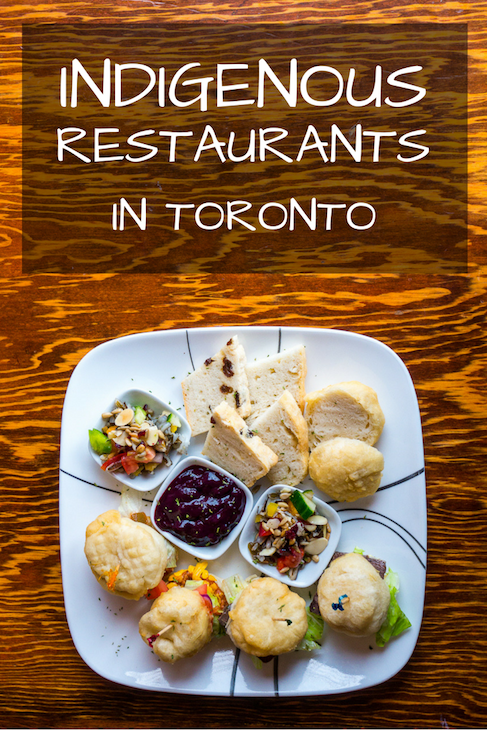Update June 2024 (originally published in 2017): The representation of Indigenous cuisine in Toronto has declined. Unfortunately, three out of the four restaurants highlighted in this article have closed. I hope to see new Indigenous establishments emerge soon. For more Indigenous cuisine options, check out Destination Toronto.
There’s a noteworthy evolution in Toronto’s culinary scene that’s more authentically Canadian than even BeaverTails or poutine. Indigenous restaurants are rightfully making their mark, spearheaded by First Nations chefs who are passionate about decolonizing their food practices and sharing their rich cultural heritage with everyone eager to learn more about Canada’s history and flavors.
In partnership with Expedia.ca, I’ve compiled a list of restaurants where you can explore this once-overlooked cuisine throughout the city of Toronto.
Tea N Bannock
The journey began in the east end when Tea N Bannock opened five years ago as Toronto’s first Indigenous restaurant.
This place doubles as a museum, with birch tree branches suspended from the ceiling, walls adorned with fur, antlers, and First Nations artwork, and a tiny fringed ceremonial dress once worn by the restaurant’s Cree manager, Tina Ottereyes.
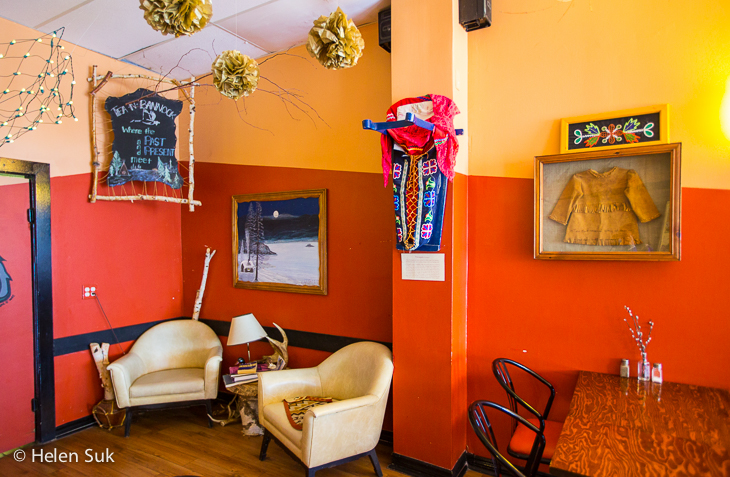
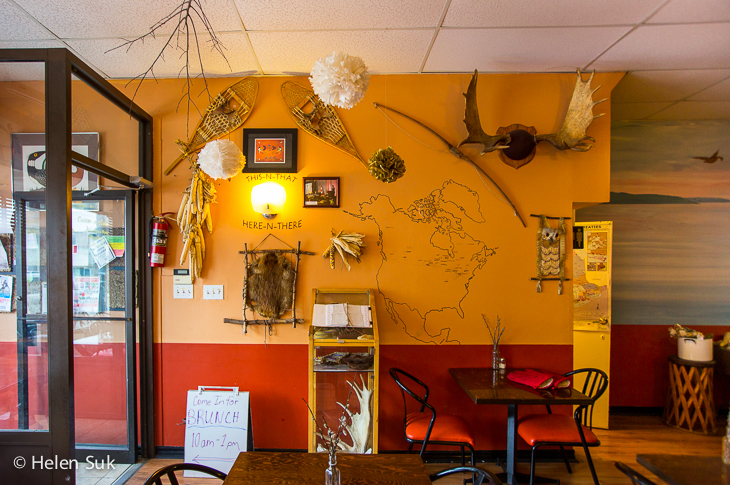
A display table features traditional ingredients like popcorn and wild rice, which is nutritionally superior to brown rice.
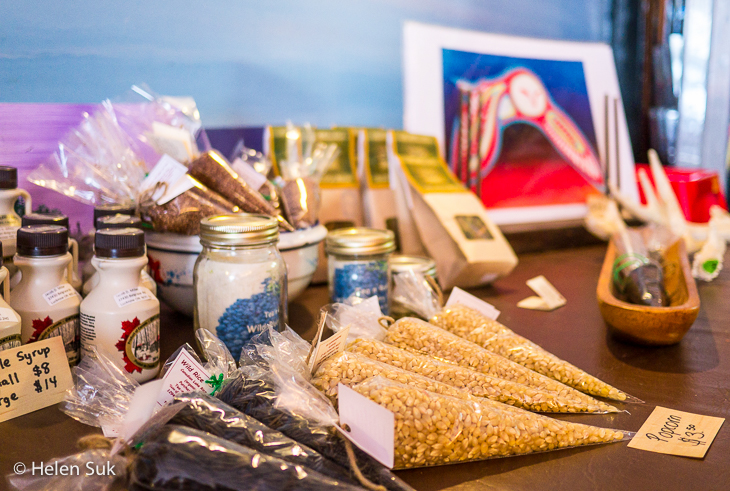
There’s a warm, family-oriented atmosphere here, enhanced by soothing Indigenous flute music, even among staff who may not be related.
Since the original publication of this post, the restaurant has updated its decor, including a transition from yellow to white walls.
The rustic, cozy ambiance at Tea N Bannock sets the perfect backdrop for what’s on the menu, though it may leave some curious about the inclusion of Klik, a canned meat similar to Spam, in traditional Indigenous fare.
The menu features pre-contact foods from various nations, including game meats and berries; however, some argue this is too narrow a definition of Indigenous cuisine. More than half of the diners are Indigenous, seeking the comfort of traditional foods—including post-contact favorites like fry bread, a fried variant of bannock (a type of Indigenous flatbread) that has become a common staple.
The adoption of industrial, processed foods like Klik stemmed from the systematic displacement and enforced changes to traditional diets during colonial times, forcing Indigenous Peoples to rely on government rations that included cheap ingredients like flour, sugar, and lard. Although unhealthy, such foods tell a painful history, leading some in the Indigenous community to advocate for their removal from culinary traditions.
Fortunately, Tea N Bannock’s most popular dishes are seafood like salmon and trout, with bison burgers topping the list.
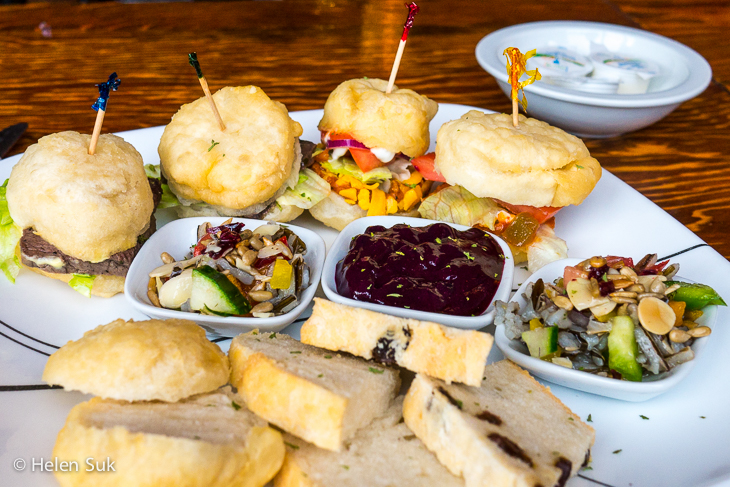
The Sample Platter offers a taste of some of the mains: bison sliders and mini tacos with fry bread, wild rice salad, bannock, and blueberry jam.
Additional items on the menu include Three Sisters soup (a traditional Indigenous dish made with squash, corn, and green beans), daily stews featuring elk, deer, or bison, and desserts like butternut squash pie.
Tea enthusiasts can enjoy Mohawk tea cultivated on the Tyendinaga Reserve or medicinal Labrador tea handpicked from northern Canada.
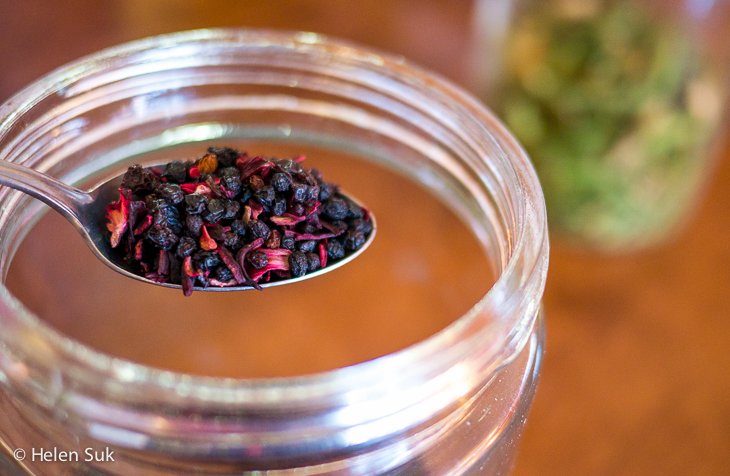
Mohawk tea, a delightful blend of red and black currants, raspberry, and hibiscus.
Pow Wow Cafe (CLOSED)
This casual spot quickly gained popularity in Kensington Market within its first year, thanks to Chef Shawn Adler, who blends his Ojibway heritage with his mother’s fry bread recipe. For Adler, the flavors evoke memories of summer pow wows attended with his family.
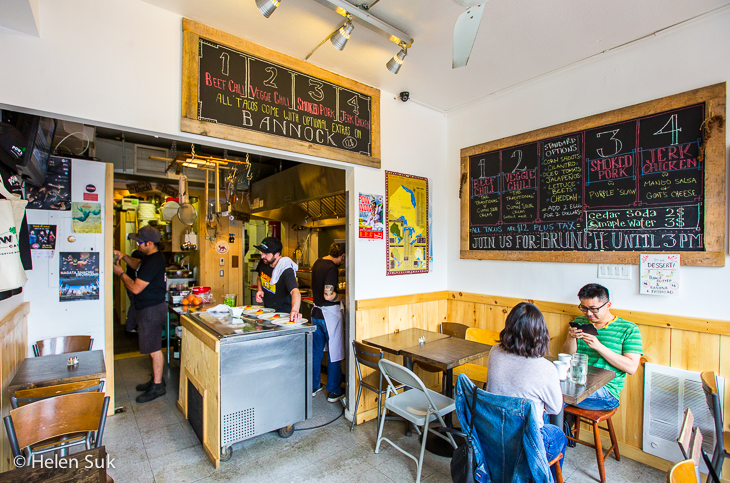
His signature dish is the Ojibway-style taco, built on a fry bread base and topped with beef or veggie chili, mixed greens, shredded cheese, sour cream, and edible flower petals. Smoked pork and jerk chicken are excellent protein substitutions as well.
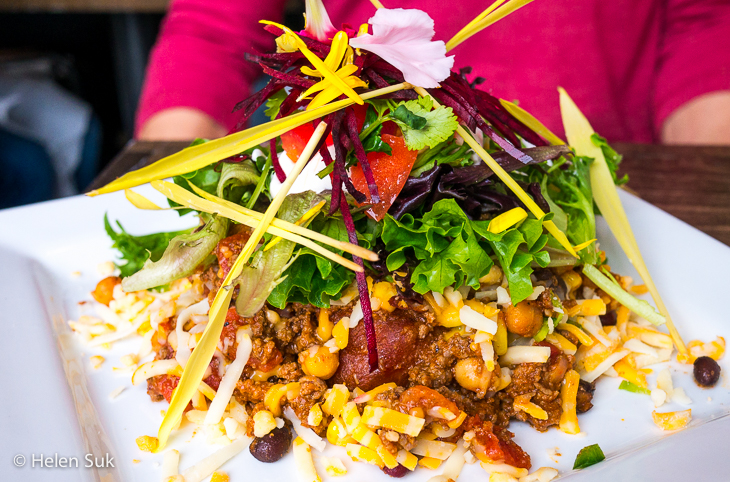
A taco topped with beef chili.
For a brunch twist, Adler adds two fried eggs on top of the taco, accompanied by home fries and fresh fruit. Other favorites include poached eggs with smoked salmon and goat cheese cream sauce.
The brunch menu features enticing dishes made with fry bread, like the new Pow Wow Platter that includes scrambled eggs, duck breast bacon, and venison sausage patties. Additionally, corn pancakes with actual kernels folded in, topped with maple-whipped brown butter, are a treat!
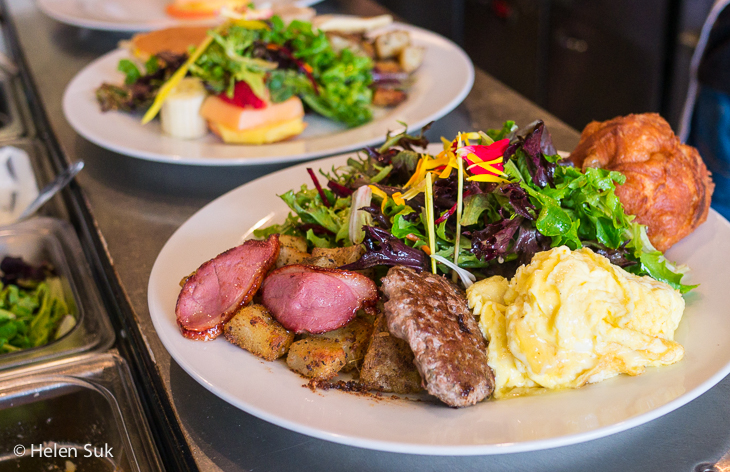
The Pow Wow Platter.
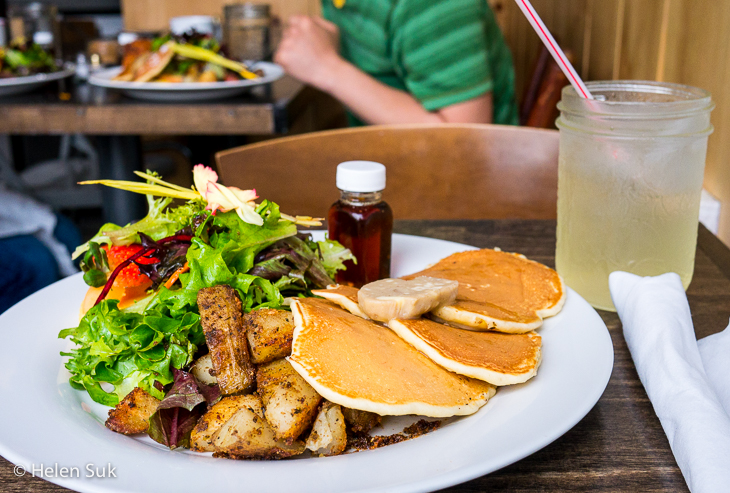
Corn pancakes paired with refreshing cedar soda.
Pow Wow Cafe provides an intimate setting, featuring an open kitchen and a small outdoor patio. Expect a crowd on weekends, so plan to arrive early or be prepared to wait.
NishDish (CLOSED)
NishDish might seem somewhat out of place in the heart of Koreatown, but Chef Johl Whiteduck Ringuette received a warm welcome during the eatery’s opening celebration in April, which featured community Elders, musicians, and dancers.
It’s a straightforward, small establishment specializing in traditional Anishnawbe breakfast and lunch options, created with fresh ingredients sourced from First Nations, Inuit, and Metis producers.
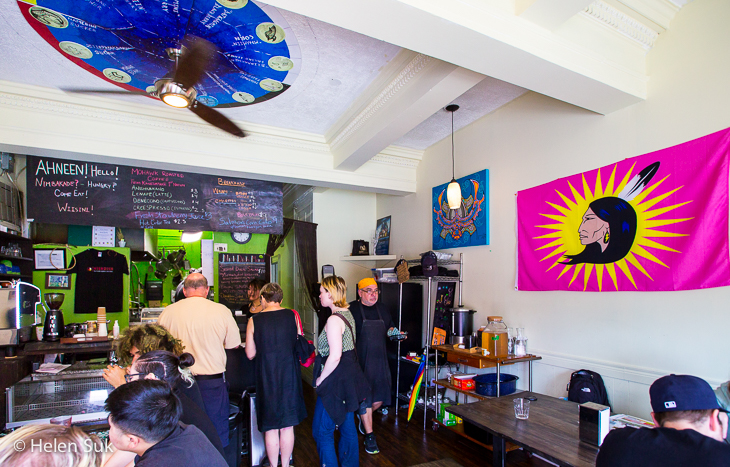
With a menu that changes daily depending on catering demands, surprises abound at NishDish. One day you might find carrot ginger soup, bison omelettes, and Arctic char, while another might feature sweet potato soup, venison stew, and elk sausage.
Smaller dishes can be combined to create a complete meal, such as cornbread with dandelion salad and salmon corn cakes.
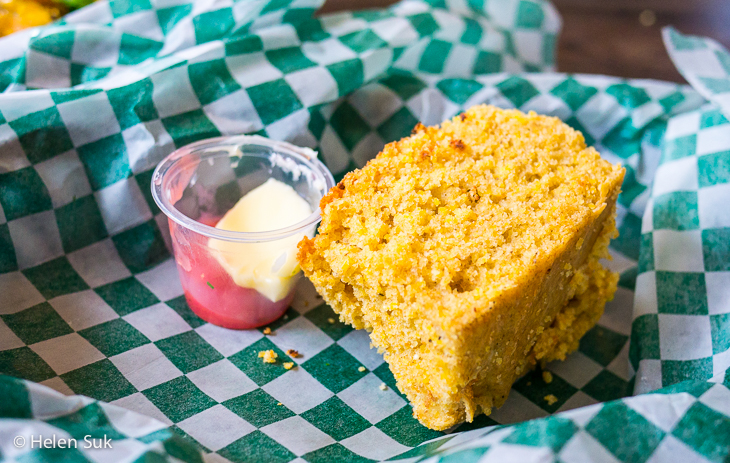
Cornbread.
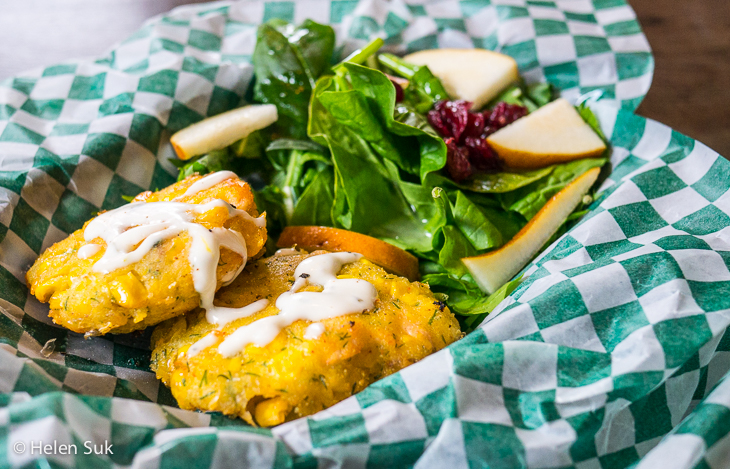
Salmon corn cakes with lemon tarragon sauce; dandelion salad with cranberries, sliced pear, and lemon vinaigrette dressing.
End your breakfast or lunch with a refreshing cup of cedar tea or an Anishnacano or Creespresso, which is brewed using Mohawk roasted coffee sourced from the Kanesatake First Nation in Quebec.
NishDish serves as a cultural, educational, and community initiative as much as it does a restaurant and catering operation. The eatery’s interior features Indigenous artworks, including a 13-moon calendar on the ceiling designed by Ren Lonechild, the same artist behind the birch tree motif on the building’s exterior.
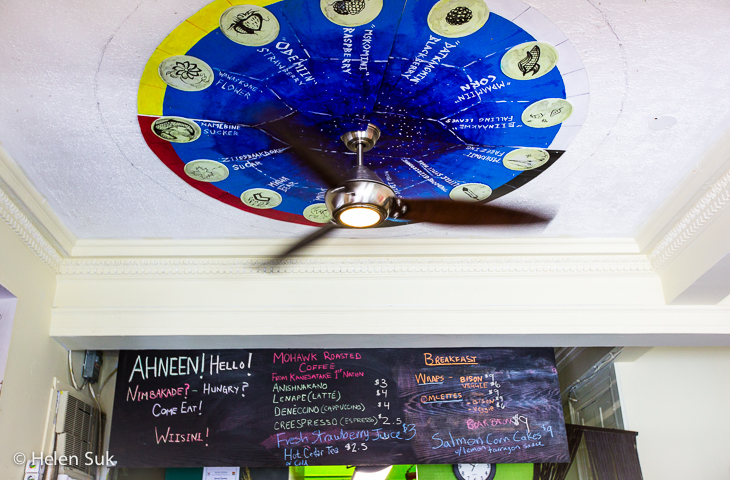
Additionally, a select range of Indigenous products from moccasins to earrings are available for sale, supporting Indigenous artisans.
Whiteduck Ringuette also collaborates with Native Child and Family Services by mentoring youth, aiming to reconnect them with their cultural heritage and teaching them culinary and restaurant business skills. By reclaiming First Peoples’ food sovereignty, he is enhancing Indigenous cultural and food literacy within his community as well as beyond.
Ku-Kum (CLOSED)
The latest addition to Toronto’s Indigenous culinary scene, Ku-Kum (which means “grandmother” in Cree), opened this month in midtown as the only fine dining restaurant representing First Peoples’ cuisine.
Chef Joseph Shawana draws inspiration from his childhood spent on the Wikwemikong Unceded Reserve on Manitoulin Island, where he was surrounded by nature’s offerings and the nurturing meals prepared by his mother and grandmother.
The emotional bonds to his food culture and the female matriarchs of his family resonate deeply, reflected in the atmosphere of Ku-Kum. The vibrant decor is steeped in symbolic meaning, with colorful murals by artists Monique Aura and Chief Lady Bird that celebrate feminine energy and the earth’s gifts.
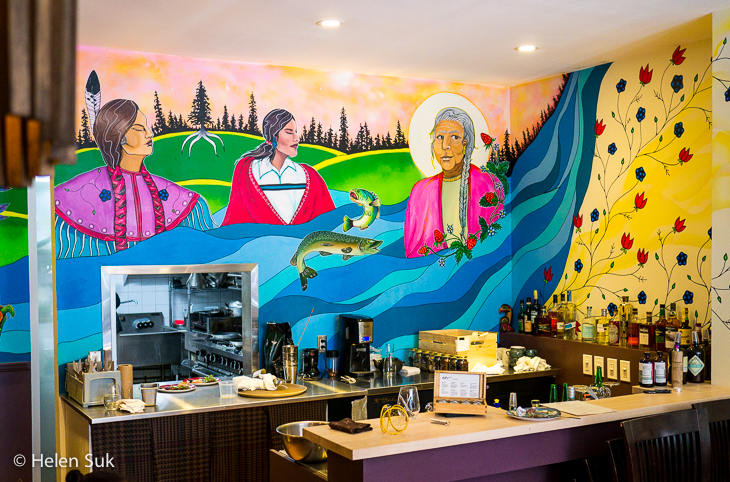
The menu includes a la carte options, as well as an eight-course tasting menu that emphasizes fresh, local ingredients from Indigenous suppliers.
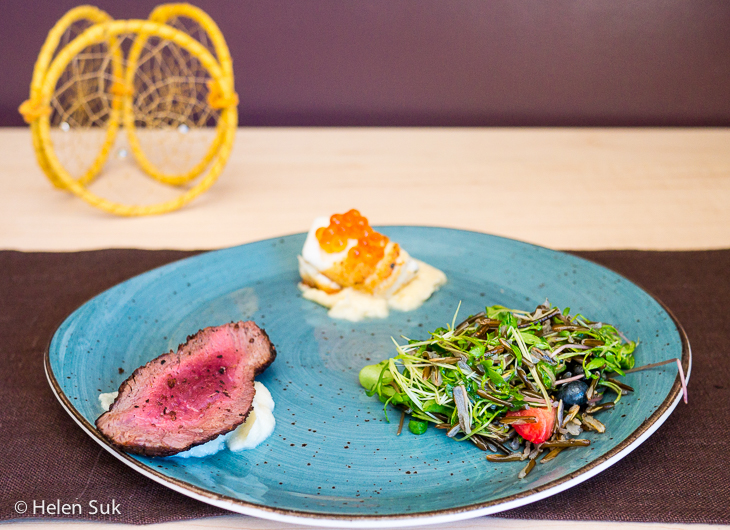
Menu samples from Ku-Kum’s soft opening: roasted elk, pan-seared halibut, and wild rice and berry salad.
The offerings feature whitefish, pike, and game meats like pheasant, but their most unusual dish? Seal tartare.
Desserts include Saskatoon berry ice cream and sweet grass crème brûlée to finish off your meal.
Indigenous Restaurants in Toronto: A Taste of True Canadian Cuisine
In a city home to every imaginable ethnic restaurant, it’s time for Canadians to discover Indigenous dining in Toronto, celebrating the foundational cultures of our national heritage that have long been overlooked. As the tagline for NishDish poignantly states: “Your friendly neighbor, since always.” Food doesn’t get more Canadian than this. (Just don’t be surprised if your meat wasn’t hunted with a bow or your wild rice foraged by canoe.)
It’s time to abandon stereotypes and embrace flavorful, satisfying food prepared with immense pride.
Pin this Post to Pinterest
